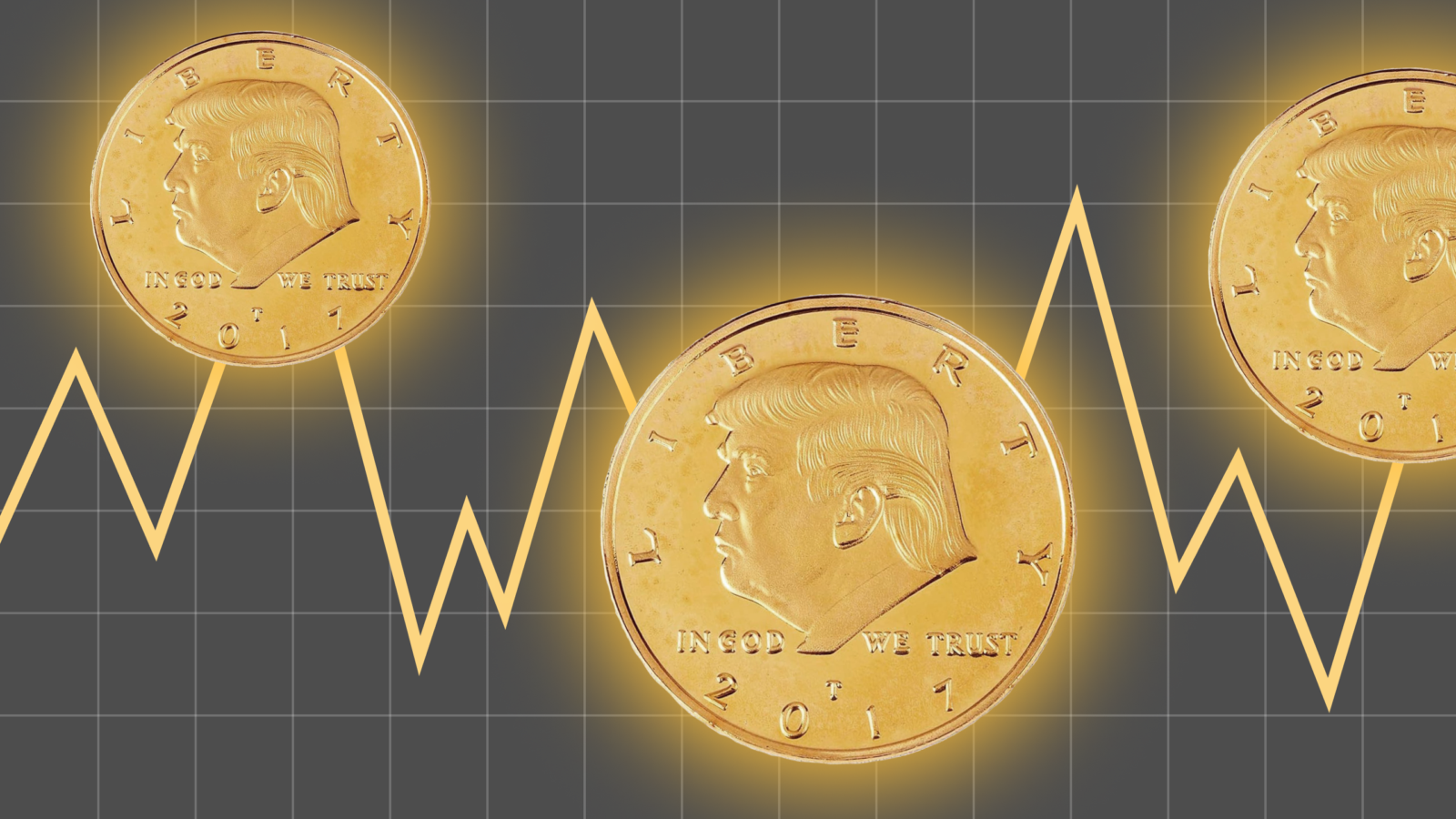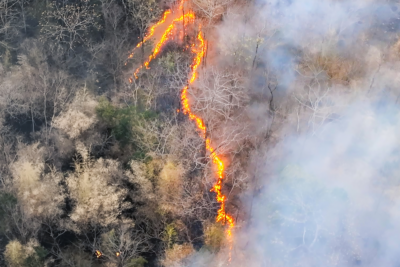How the Biggest Themes of the Year Will Hold Sway Over 2024
Forecasting shifts in wealth, climate and the changing world order.

Sign up to unveil the relationship between Wall Street and Washington.
Forecasting shifts in wealth, climate and the changing world order.
This year brought a series of deeply interconnected, pivotal events: Upheaval in the nation’s banking system on the back of 11 consecutive rate hikes; another downgrade of America’s long-term credit rating amid repeated threats of a government shutdown; an unprecedented 91 indictments against a former U.S. president – with implications for who will win the Oval Office in 2024 – and tectonic shifts in artificial intelligence, crypto, climate change, geopolitics and America’s democracy.
What made 2023 significant is not just how many of these happenings cascaded into one another to fuel more calamity, but the fact that many have become genuine harbingers – a sign of things to come.
Looking to 2024 and beyond, it’s easy to see that, domestically, a great deal will hinge on the outcome of the U.S. presidential election, whether the Federal Reserve’s campaign of interest-rate hikes will pave the way for a much-hoped-for economic “soft landing,” and America’s commitment to its democracy, rule of law, freedoms for all – and the immense expenses and responsibilities that come with it.
Still more broadly speaking, a range of issues covered by Power Corridor this year will undoubtedly have global implications for 2024.
Below, we highlight three key themes that are likely to have an outsized impact in the New Year – and the years ahead.
Shifting Global Wealth:
The heftiest-ever wealth transfer in history made headlines in 2023, with roughly $100 trillion of assets being passed on to Generation Z and millennials (aka “Zennials”), or those born after 1980. Most of this largesse will be coming from baby boomers born between 1946 and 1964, with an estimated $72 trillion of it being passed directly to heirs and about $12 trillion donated to charities between now and 2045.
Considering that the most recent billionaires attained their rarefied status from inheritance rather than their own hard work (this is according to private banks serving some of the world’s most affluent), the global wealth transfer is a trend to watch closely – especially with income disparities and the widening wealth gap fomenting fierce social discontent and political polarization in the U.S. and beyond.
These forces have the capacity to upend the social and political order of nations, particularly the richest ones. According to the Brookings Institution, a nonprofit Washington think tank, income inequality has spiked in both the most advanced and top emerging economies, which together represent around two-thirds of the world’s population and 85 percent of gross domestic product. The rise in inequality has been the most pronounced, it says, in the U.S., China, India and Russia, in addition to a number of developing nations, rivaling the Gilded Age.
This shift, which is expected to concentrate trillions of dollars of wealth in ever-fewer hands, should be viewed against reports this year that the wealthiest 1 percent grabbed 54 percent of all new wealth generated over the past decade and approximately two-thirds of all wealth created since 2020. How much of that has gone into global tax havens? Those numbers are incalculable.
Going into 2024, the financial headwinds will undoubtedly weigh on how nations approach taxation, spending and the health of their economies, to say nothing of how voters will choose their leadership.
Impact of Climate Change:
The Earth’s temperature is rising and has been for decades. This year, scorching summer heat in certain parts of the U.S. not only broke multiple records, but hobbled refineries desperately needed to backstop the nation’s energy supply, pushing fuel prices higher.
In fact, since the late 1970s, America’s pace of warming beat the global rate, according to the U.S. Environmental Protection Agency.
Overall, global surface temperatures have climbed on average by 0.17° Fahrenheit each decade since 1901. That means regardless of the fervent politicization of the climate change debate – and whether humans are to blame or can do anything about it – the effects of warming have been, and will continue to be, inescapable.
CEOs, politicians and citizens may differ on what’s driving the changes in temperature and weather patterns, but there’s no dodging the fact that Americans are already dying due to climate change – and have been since around 2005. U.S. cities from coast to coast have experienced fatalities in the double digits each year, especially south of the Mason-Dixon line, according to an in-depth project surveying more than 24,000 regions of the world, led by the United Nations Development Program and New York-based Rhodium Group, a provider of independent research, data and analytics. Some of the hardest hit areas? Texas, Arizona and Georgia, among others.
With the 2024 presidential election nigh, climate change issues are getting more airtime than usual, but that may be inevitable, as 2023 is set to be the warmest year on record, with scientists warning the Earth is entering uncharted territory.
Looking ahead, 2024 is likely to be still warmer, according to the U.S. National Oceanic and Atmospheric Administration, exacerbated by El Niño, which will stretch into the spring, forcing global temperatures higher while intensifying weather patterns.
But that’s not all – some forecasters are going so far as to predict that 2024 could be the first year in which Earth’s average global surface temperature will be 1.5° Celsius warmer than in the pre-industrial era.
That would not only cross the limit set by the 2015 Paris agreement – which sought to avoid pushing global temperatures that high – but mark a milestone in climate history.
The ‘New’ World Order:
The notion of a so-called new world order has been an overriding theme in the past year, with the post-Cold War era fast fading and the outlines of a newly minted global order only beginning to take form.
This year, the World Economic Forum in Davos, Switzerland, the United Nations General Assembly in New York, and the COP28 climate summit in Dubai were compelled to acknowledge that a globalized world that promised to bring greater freedoms with greater trade now risked “great facture.”
While some might say the euphoric promise of globalization was always a pipe dream, U.S. Army General Mark Milley noted in 2021 that much of the world had, indeed, enjoyed what he called a “great power peace” that reigned since the end of World War II, but was beginning to show signs of strain and “fraying at the edge.”
With wars in both the Middle East and Europe causing major divisions among some of the world’s most powerful nations (topics Power Corridor has covered in detail this year here), and rising financial and technological competition between the planet’s two largest economies – the U.S. and China – the ideals of free-market capitalism and Western liberal democracy hang in the balance.
What will a potential alternative international order look like? Next year will very likely impact its trajectory, with implications for the future in all aspects of life, including markets, finance, housing, labor, healthcare, culture, politics and the environment. The challenges will be real, but they also will allow for a re-evaluation of old-guard ways of thinking, paving the way for new modes of thought and, hopefully, solutions.
The views expressed in this op-ed are solely those of the author and do not necessarily reflect the opinions or policies of The Daily Upside, its editors, or any affiliated entities. Any information provided herein is for informational purposes only and should not be construed as professional advice. Readers are encouraged to seek independent advice or conduct their own research to form their own opinions.











